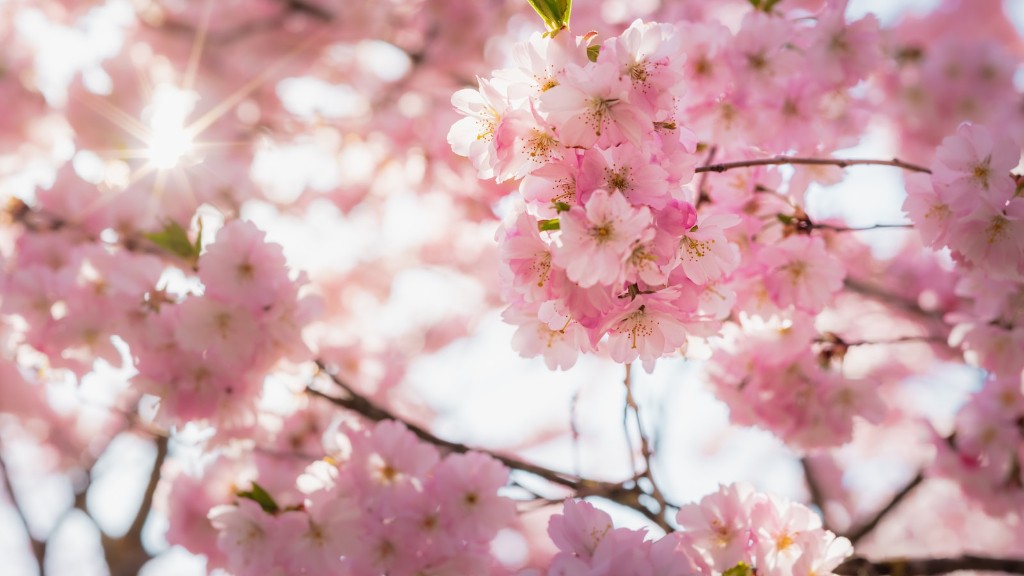During winter, the important thing to remember when learning how to care for your lemon tree is to provide adequate soil moisture and protect it from the cold. Lemon trees, like other citrus trees, can’t handle temperatures that drop below freezing. To make sure your tree is safe and healthy, it’s best to move it indoors where it can stay warm during winter. When selecting an indoor location, try to pick out a space with enough natural light to encourage healthy growth and a steady stream of water to ensure proper hydration.
When indoors, lemon trees need bright light. A sunny east and south facing window is ideal. If the light is too dull, you can switch to a grow light to supplement the sun’s natural rays. During the winter months, it’s also important to check the soil moisture daily and make sure it’s not getting too dry. If the soil does dry out, give the tree a good drink of water to ensure it’s staying hydrated.
In addition to providing the right amount of light and water, you also need to adjust the humidity of the indoor environment to help the tree thrive. The ideal range to maintain is between 50-60%. You can increase the humidity by placing a shallow tray of water next to the tree and keeping a humidifier running inside the room to avoid excessive drying out. Lastly, during the colder months make sure to keep your lemon tree away from radiators and heaters.
Temperature Control
In terms of temperature control, lemon trees can’t handle temperatures below roughly fifty degrees Fahrenheit. It’s important to take note of the temperature in both the day and night. During the day, try to keep the temperature between 65-85 degrees and make sure it doesn’t dip below fifty degrees at night. If the temperature does dip lower, move the tree to a warmer location.
Fertilizing
Lemon trees need a light application of fertilizer if you expect them to be productive. During winter months, use a general citrus type fertilizer, dilute it to 1/4 strength and apply it every 8-10 weeks. Many citrus fertilizers are magnesium-based which helps promote vigor and health of the tree. It’s also important to watch out for pests during winter. While it may be easy to forget about pests during the winter months, regular inspection of your lemon tree is essential to prevent pests, diseases and other problems.
Pruning
Pruning is an important part of winter care for a lemon tree; it not only encourages new growth but also eliminates dead or damaged limbs. If you already have a lemon tree, prune away any dead branches as soon as possible to promote new growth. If it’s a new tree, wait to prune it until there’s signs of life.
Moving Outdoors
When winter has passed, it’s time to move your lemon tree outdoors again. Make sure to check the local weather and temperatures before doing so, as too much cold will damage the tree. As a general rule, move the tree outside only after the nights remain above forty-five degrees for several days. When the time is finally right, move the tree outside and give it a thorough watering.
Placement and Sun Exposure
When placing a lemon tree outdoors it’s best to put it in a sunny, sheltered location as far away from cold winds and drafts as possible. The tree will also need 6-8 hours of sunlight per day to ensure it is receiving adequate nutrients. If the tree is unable to receive enough natural sunlight, consider using a supplemental grow-light system to provide it with the energy it needs.
Winter Showers
Though the leaves of a lemon tree may dry out during the winter months, make sure it’s still getting adequate water. Lemon trees should be watered deeply every one to two weeks during the winter season. Make sure to also check the soil moisture frequently and ensure it’s not too wet. Standing water near the root zone can lead to root rot and other diseases.
Winter Protection
Finally, it’s best to cover the lemon tree with a single layer of frost cloth or burlap when temperatures near freezing. This will protect the fruit, leaves and branches from the cold air and help maintain an even temperature inside the tree. Make sure to take the trees off the cover once temperatures start to rise again.


